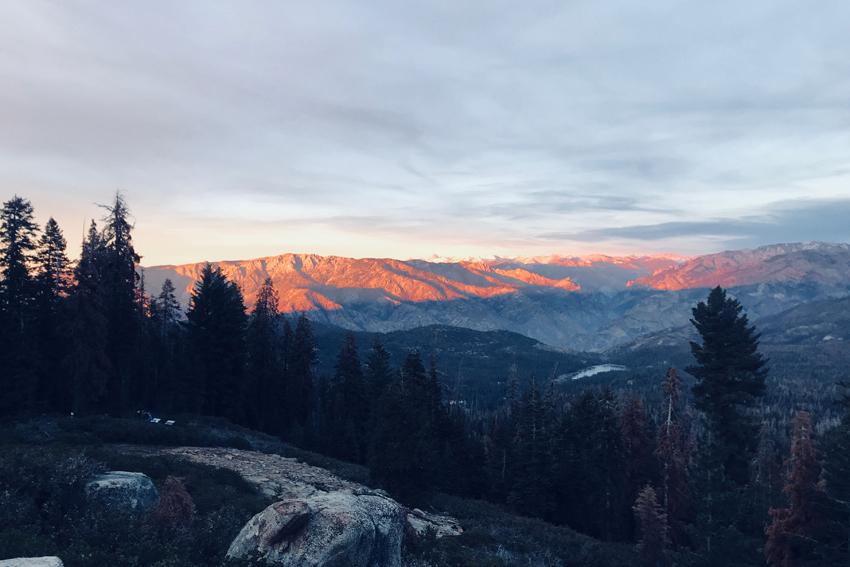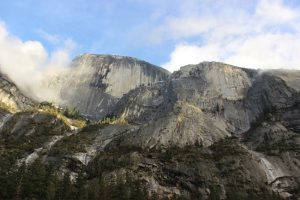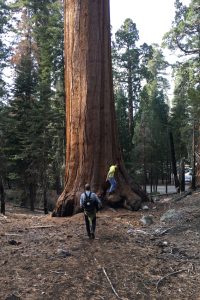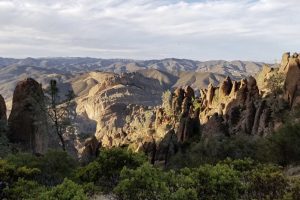
Students give opinion on national parks in California, share memories
This is part 1 of a 3 part series discussing some of California’s best attractions, including National Parks, Theme Parks, and beaches.
California won the title this year on WalletHub for the Most Fun State of 2018 due to the abundance of activities the state has to offer.

California has many things to offer, including a variety of climates ranging from snowy mountains to dry deserts to sunny beaches, which house many national parks, a variety of amusement parks and plenty of tourist destinations.
California is home to nine of the nation’s 58 national parks and holds the title for most national parks in one state. California offers access to Yosemite National Park, Joshua Tree National Park, Pinnacles National Park, Channel Islands National Park, Lassen Volcanic National Park, Death Valley National Park, Redwood National Park, and Sequoia and Kings Canyon National Park. All of them offer a multitude of picturesque settings and very different scenery.
Many travel blogs all seem to mention five of these nine as the tourist favorites. The elite list consists of Yosemite National Park, Joshua Tree National Park, Pinnacles National Park, Death Valley National Park, and both the Sequoia and Kings Canyon National Parks.
Yosemite National Park
In 1890 Yosemite was deemed a national park, spanning over 1,200 square miles, it is the is the destination for some iconic landmarks and photos. The natural wonders it contains draw over four million visitors each year. The park contains waterfalls, meadows, massive sequoias, and stunning mountains and is the home to the picturesque Half Dome.
Amanda Grimmius, ‘19, visited the park in November for the first time. She appreciates the beauty of the park and its massive size.
“I recommend it, it’s absolutely beautiful,” Grimmius said. “It’s unique because it is so large, and has all different kinds of natural land formations from giant granite peaks to waterfalls. The most beautiful part was the view from Mirror Lake.”
Kyle Friesen, ‘19, visited Yosemite last summer, he recommends people visit the park for hikes and the beautiful scenery.
“I definitely recommend people go see Yosemite, although I usually prefer the national forests, Yosemite has some amazing trails, hikes, and climbs,” Friesen said. “Yosemite is unique because the infrastructure makes some hard to get to landmarks more accessible.”
A Yosemite Park Pass is $30 a vehicle or you can purchase a Yosemite Pass for $60, which allows unlimited visits for 12 months.
Joshua Tree National Park
Established in 1994, Joshua Tree National Park connects two famous deserts to create a stunning atmosphere. The unique park brings in over 2.8 million visitors yearly. The Mojave and the Colorado deserts contain many distinct landmarks created by natural forces and the variety of wildlife makes the park appealing to visitors. The park offers very different looking boulders and yucca trees and is known for its gorgeous colorful sunsets.
Brynnor Poplin, ‘22, got to go through Joshua Tree National Park a few years ago with his family. He thought that the fact that there was still wildlife amidst all the dryness was very cool and he appreciated the change in scenery.
“It was pretty cool just seeing the dry area then there was wildlife still everywhere and the trees,” Poplin said. “It was different because we are used to the mountains and the wetness, but it was all dry.”
The entrance price for the Joshua Tree is $30 a car or $25 a motorcycle. Annual passes are available for $55.
Sequoia and Kings Canyon National Park

These two separate parks lie side by side and often get confused for being one park. Sequoia National Park was formed in 1890, and Kings Canyon National Park was created in 1940. Sequoia National Park is home to some of the largest sequoia groves. These ancient trees have become an iconic picture, and even hosts the world’s largest living tree, General Sherman. Kings Canyon National Park, houses the deepest canyon in America, even trumping the Grand Canyon in depth.
Deborah Ingerson, ‘20, visited the park in 2017 with her family and recalls its beauty.
“I went with my family to explore more near Fresno,” Ingerson said. “We had family visiting and we wanted to show them some nice spots. It’s very beautiful up there and it’s wonderful being outside in nature.”
The giant trees impressed her and she hopes to go visit the park again.
“It’s unique because of the huge trees,” Ingerson said. “I was quite impressed with the how large those trees were. Yes, I would go back because I love hiking and being outdoors and the Sequoia National Park gives you that.”
Brennen Tozlian, ‘21, is in awe of the size of the tree the park house, and hope to go back in the wintertime.
“I really like the giant sequoias because they are so big, and it is crazy that it is a tree but it is still the size of a building,” Tozlian said. “I would definitely like to go back, especially in the winter when it is snowing.”
The Sequoia and Kings Canyon park fees cost $35 per car or $30 per motorcycle. Fees continue at $20 per person and $60 for an annual pass.
In the following podcast, Toryn Triplitt and Brennen Tozlian continue to discuss Sequoia and Kings Canyon National Park.
Pinnacles National Park
Created by lava flow, Pinnacles National Park creates a unique atmosphere and brings in over 200,000 travelers each year. The park was formed in 2013 and is California’s newest national park. The young park contains cliffs, caves, and rock spires, that shockingly are home to a variety of species.
Janae Shew, ‘20, visited the park in 2017 and recalls the stunning views. Shew appreciates unique structures and views.
“The best thing about the park is the views, when I went we climbed one of the mountains and you could see for miles around, which was breathtaking. It’s a little bit out of the way, but if you want to go hiking there are all these amazing rock formations, so I would recommend it.

Shew likes that it is a different type of scenery than forests and mountains. And she would like to go back for another visit.
“Usually when we think of national parks, we think forests, but Pinnacles National Park isn’t really like that,” Shew said. “It’s all these rock formations that are nothing like you’ve ever seen. I definitely would go back and go for another hike there, it was beautiful.”
Park prices are $25 per car and $20 per motorcycle. You can also purchase a week-long pass for $12 a person or an annual pass for $50.
Death Valley National Park
Probably the most extreme national park California has to offer was established in 1994, and was given the menacing name; Death Valley National Park. Death Valley is the lowest point in America, with the lowest spot hitting 279 feet below sea level. During the summer months record, scorching temperatures ravage the land. Despite this many different varieties of life flourish in the park. The park offers colorful spreads of wildflowers, ghost towns, old mining sites, and wildlife.
Braxton Liebe, ‘21, visited Death Valley about five years ago with his family and remembers the silence of the dry land, and recommends that people go to experience it.
“The most beautiful part was how quiet it was there,” Liebe said. “There was silence with nothing to disrupt it. I went with my family while we were moving here to California. I would like people to go because of the peace you feel while you’re there.”
Noah Weimer, ‘22, got to see Death Valley a few summers ago. Weimer observed all of the hairpin turns to be very unique and remembers the intensity of the heat.
“All the hairpin turns where you would go into the mountain, and then you would come back out and there would be a really nice view, and then you would lose it again, and then come back out and it would be back,” Weimer said. “It was probably 110 plus degrees and it was suffocating almost.”
The following tweet displays a sunrise in Death Valley National Park.
A Death Valley morning, a few days back, brought to you by NPS/Deldin. Happy Sunday! #Sundaymornings #sunrise #DeathValley pic.twitter.com/Cd3si4fvyl
— Death Valley NP (@DeathValleyNPS) October 28, 2018
Vehicle fees at Death Valley will cost you $25, a motorcycle pass will cost $20. One pass per person stands at $12 and the 12-month pass costs $50.
California’s beautiful scenery housed in the many different national parks deserves to be seen, so go out and explore it!
*Prices listed are subject to change.*
*Results were gathered from 10 travel recommendation sites.*
For more articles read, Preparing to face conflict with peaceful resolution and Rylee Schwab 1st on CIF Central Section goals leaderboard
This author can be reached via twitter @toryntriplitt and via email: Toryn Triplitt.